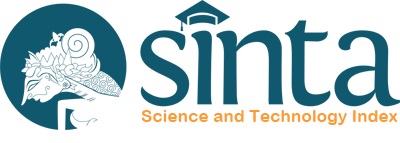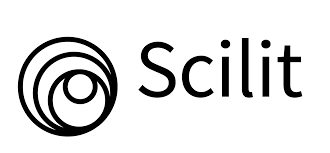Natural Lighting Study of the Smith Alam Sutra Building, Tangerang City
DOI:
https://doi.org/10.35814/asiimetrik.v6i1.5952Keywords:
glare, building, interiorAbstract
In architectural planning, natural lighting systems need to be considered. With the right program, natural light has an impact on occupant productivity and satisfaction. Controlling lighting use is necessary to manage the glare effect in the room, in addition to its advantages in terms of energy efficiency. The application of minimalist facade systems without additional shading elements is increasing in number, and the form is increasingly minimalist. Minimalist facade designs are not suitable for use in tropical countries with abundant sunlight. Apart from increasing the cost of electrical loads, sunlight penetrating buildings through transparent walls or glass also causes a glare effect in space. Therefore, it is necessary to study and implement the lighting system correctly to ensure a high-quality room atmosphere. The research method uses a mixed-methods approach, carried out using an explanatory sequential strategy. The analysis process begins with a qualitative research stage, followed by quantitative research. Research data was obtained from literature studies, observations, and interviews with planners, owners, and residents. The simulation results showed that the installation of shading (horizontal, vertical, and combined) on the west side, following the SNI no. 03-2396-2001 method to reduce glare, did not decrease the value of light exposure received by the building mass of the Smith building. Based on the activities conducted, measurements on units that are already operational, and which are still in standard condition have informed us that proper interior implementation contributes to decreasing light intensity values in office, SOHO, and apartment spaces
Downloads
References
Adamopoulos, I.P. and Syrou, N.F. (2022) ‘Workplace Safety and Occupational Health Job Risks Hazards in Public Health Sector in Greece’, European Journal of Environment and Public Health, 6(2), p. em0118.
Aditiya, S. (2022) Pemantulan Cahaya: Pengertian, Hukum, Jenis, Contoh dan Rumus. Available at: https://www.viva.co.id/edukasi/1473545-pemantulan-cahaya-pengertian-hukum-jenis-contoh-dan-rumus (Accessed: 14 September 2023).
AGC (2023) Industrial & Outdoor LED Lighting Solutions, AGC Lighting. Available at: https://www.agcled.com (Accessed: 5 June 2023).
Antou, R.S. (2013) ‘Pengaruh Jendela Tipe Rumah Minimalis Terhadap Kuat Pencahayaan Alami Dalam Ruang.’, RADIAL : Jurnal Peradaban Sains, Rekayasa dan Teknologi, 1(2), pp. 150–159.
Asahimas, A. (2016) ‘Kaca Sunergy’, Kaca Tempered YULIAGLASS, 26 May. Available at: https://kacatempered.wordpress.com/2016/05/26/kaca-sunergy/ (Accessed: 14 January 2023).
Avci, A.N. and Akbay, S. (2022) ‘Visual comfort assessment of OLED lighting in an indoor office environment’, GRID -Architecture Planning and Design Journal, 5(2), pp. 129–143.
Bawazier, F. (2022) ‘Tips Mengatasi Ruang Kerja yang Silau Karena Cahaya Matahari’, Cipta Office, 25 February. Available at: https://www.ciptaoffice.com/tips-menghalangi-cahaya-matahari-di-ruangan/ (Accessed: 14 July 2023).
Bowo, F. (2012) ‘Peraturan Gubernur (PERGUB) Provinsi Daerah Khusus Ibukota Jakarta Nomor 38 Tahun 2012 tentang Bangunan Gedung Hijau’. Available at: https://peraturan.bpk.go.id/Details/232692/pergub-prov-dki-jakarta-no-38-tahun-2012 (Accessed: 5 February 2023).
Dananjaya, A., Priyatmono, A.F. and Raidi, S. (2015) ‘Identifikasi Fasad Arsitektur Tropis Pada Gedung-Gedung Perkantoran Jakarta (Studi Kasus Pada Koridor Dukuh Atas-Semanggi)’, Sinektika: Jurnal Arsitektur, 13(2), pp. 125–135.
Daryanto, D. and Sjarifudin, F.U. (2012) ‘Jendela Hemat Energi pada Fasade Rumah Susun di Jakarta’, ComTech: Computer, Mathematics and Engineering Applications, 3(1), pp. 1–7.
Eldridge, M. (2015) Reducing Glare as a Workplace Safety Hazard, Safety Glasses USA. Available at: https://safetyglassesusa.com/blogs/news/reducing-glare-as-a-workplace-safety-hazard (Accessed: 14 April 2023).
El-Sayed, S. and Abed, M. (2021) ‘The Use of Sustainability Principles and Lighting Technology in Lighting Hotels’ Lobby Area’, Journal of Association of Arab Universities for Tourism and Hospitality, 21(4), pp. 158–171.
Gunadi, I. (2007) 101 Disain Jendela. Niaga Swadaya. [Print].
Joubert, T. (2013) The design of a system for evaluating glare from small lighting sources. Thesis. Vaal University of Technology.
Lechner, N. (2008) Heating, Cooling, Lighting: Sustainable Design Methods for Architects. 3rd edition. Hoboken, N.J: Wiley. [Print].
Michael, A. and Heracleous, C. (2017) ‘Assessment of natural lighting performance and visual comfort of educational architecture in Southern Europe: The case of typical educational school premises in Cyprus’, Energy and Buildings, 140, pp. 443–457.
Mintorogo, D.S. (2006) ‘Unsustainable Building Façades And Fashions In Surabaya’, Dimensi: Journal of Architecture and Built Environment, 34(1), pp. 67–72.
Nafakh, A. et al. (2022) Workzone Lighting and Glare on Nighttime Construction and Maintenance Activities. Final Report FHWA/IN/JTRP-2022/16. USA: Indiana Department Of Transportation And Purdue University.
Qori’atunnadyah, M. et al. (2021) ‘Comparison of short runs control chart and T2 Hotelling control chart for monitoring sunergy glass production process’, Journal of Physics: Conference Series, 2106(1), p. 012019.
Sajjad, F. (2021) ‘Development Of Anti-Fog Agent For The Reduction Of Potential Occupational Visual Hazards At Workplaces’, Pakistan Journal of Science, 73(1), pp. 144–153.
Sim, Y. et al. (2017) ‘A preliminary study of an evaluation method for discomfort glare due to light trespass’, Lighting Research & Technology, 49(5), pp. 632–650.
Trajkova, A. and Namichev, P. (2022) ‘Impact Of New Lighting Technologies As An Important Element Of The Interior’, Natural Resources and Technology, 16(2), pp. 48–55.
Tregenza, P. and Wilson, M. (2013) Daylighting: Architecture and Lighting Design. Routledge. [Print].
Wienold, J. and Christoffersen, J. (2006) ‘Evaluation methods and development of a new glare prediction model for daylight environments with the use of CCD cameras’, Energy and Buildings, 38(7), pp. 743–757.
Wiyanto, A.F.E. (2021) ‘Analisis Pencahayaan Alami Dan Buatan Pada Ruang Kantor Terhadap Kenyamanan Visual Pengguna’, Jurnal PATRA, 3(1), pp. 33–42.





























